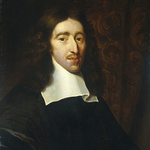Van staatsgezind tot liberaal. De beeldvorming over Johan de Witt in de revolutietijd (1757-1840)
DOI:
https://doi.org/10.18352/bmgn-lchr.6144Keywords:
Image, Revolutionary movementAbstract
From republican to liberal. The image of Johan de Witt during the years of revolution (1757-1840)
In the fateful year of 1672, Johan and Cornelis de Witt were brutally murdered by an angry mob in The Hague that had sympathies with the House of Orange. The question is raised: was it the case, one hundred years later in the eighteenth century, that the underlying political motive behind the death of the de Witt brothers led to them being used by a disparate group of political admirers, from republicans to patriots and Bataven, in their own struggle against the ancien régime and stadholder of the time? The answer is simple but clear: no it wasn’t. The republicans defended Johan de Witt against orangeist attacks, but the patriots in the late 1780s were unimpressed with the Grand Pensionary and his brother because of their aristocratic background. During the French occupation of the Netherlands opinions about the de Witt brothers changed and they were suddenly held in great esteem by both patriots and liberals alike. The massacres committed by ordinary citizens during the revolution in France greatly influenced public opinion about Johan and Cornelis. From that time onwards, they were regarded as victims of the angry masses and their fate came to symbolise the dangers of direct democracy.
Downloads

Downloads
Published
Issue
Section
License
Authors who publish with this journal agree to the following terms:
a) Authors retain copyright and grant the journal right of first publication with the work simultaneously licensed under a Creative Commons Attribution 4.0 International (CC BY 4.0) that allows others to share the work with an acknowledgement of the work's authorship and initial publication in this journal.
b) Authors are able to enter into separate, additional contractual arrangements for the non-exclusive distribution of the journal's published version of the work (e.g., post it to an institutional repository or publish it in a book), with an acknowledgement of its initial publication in this journal.
c) Authors are permitted to post their work online (e.g., in institutional repositories or on their website) prior to and during the submission process.
Authors are explicitly encouraged to deposit their published article in their institutional repository.











